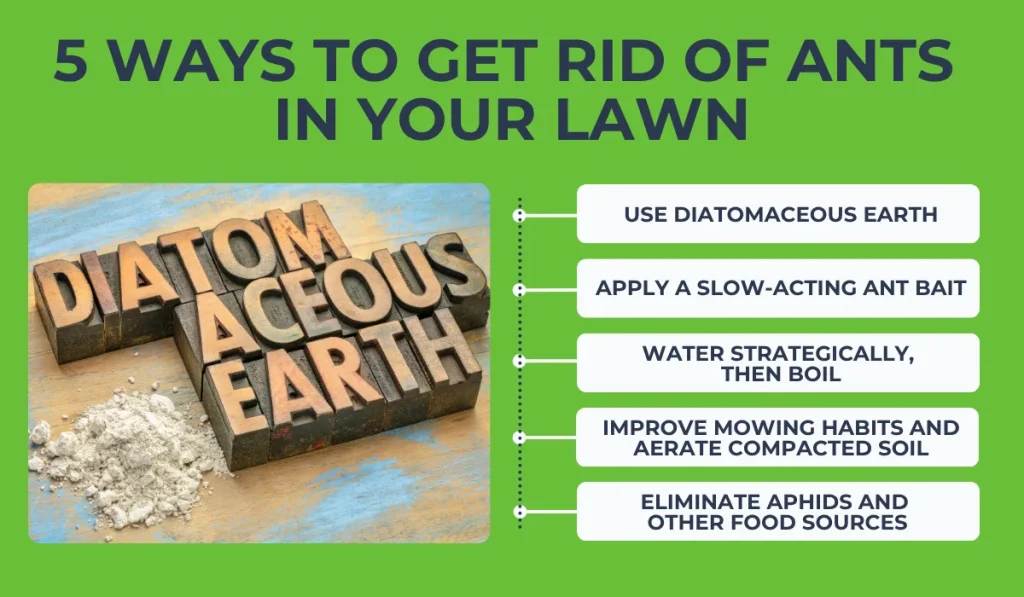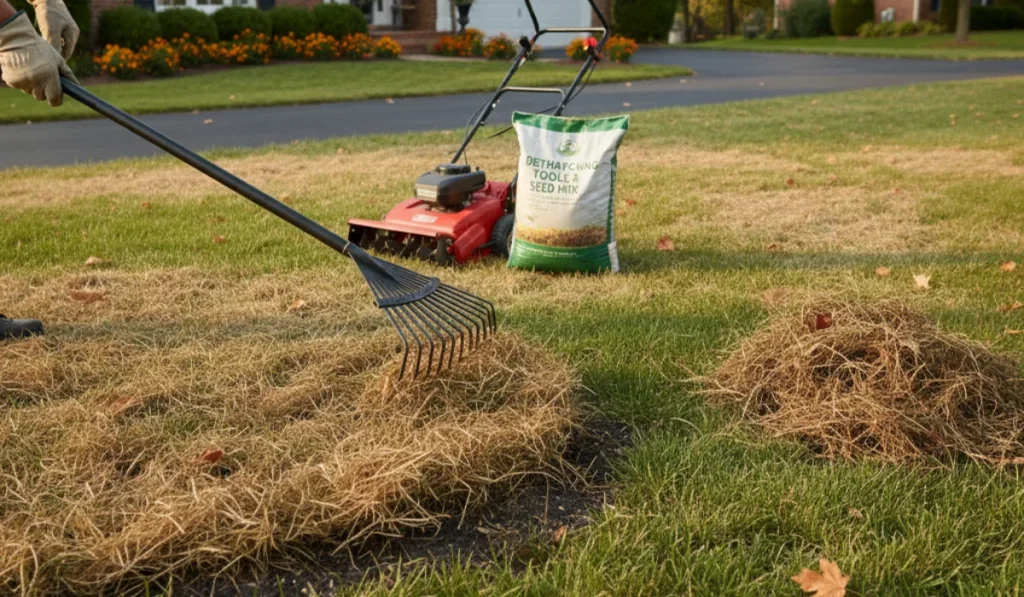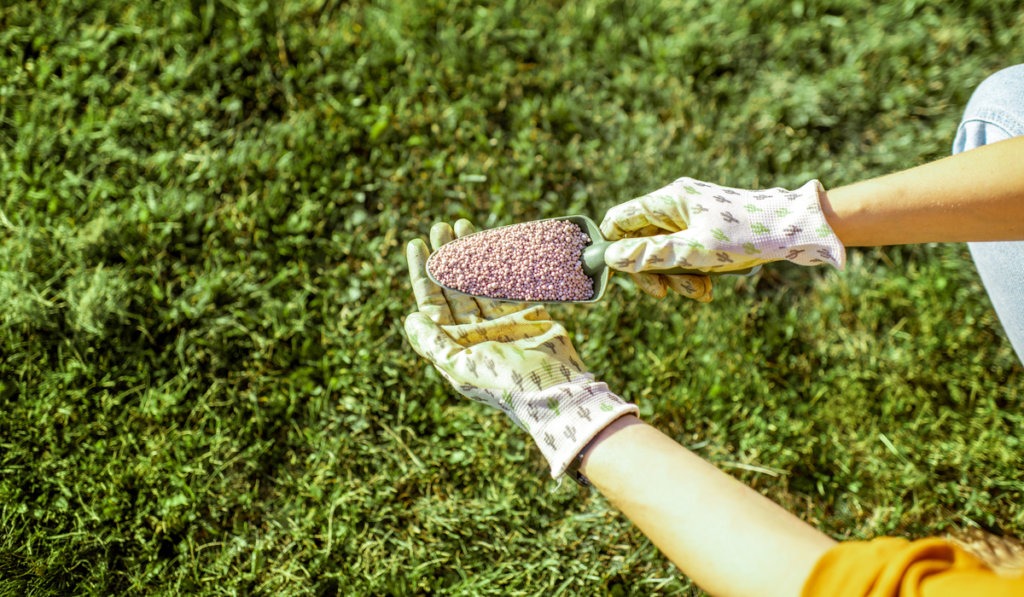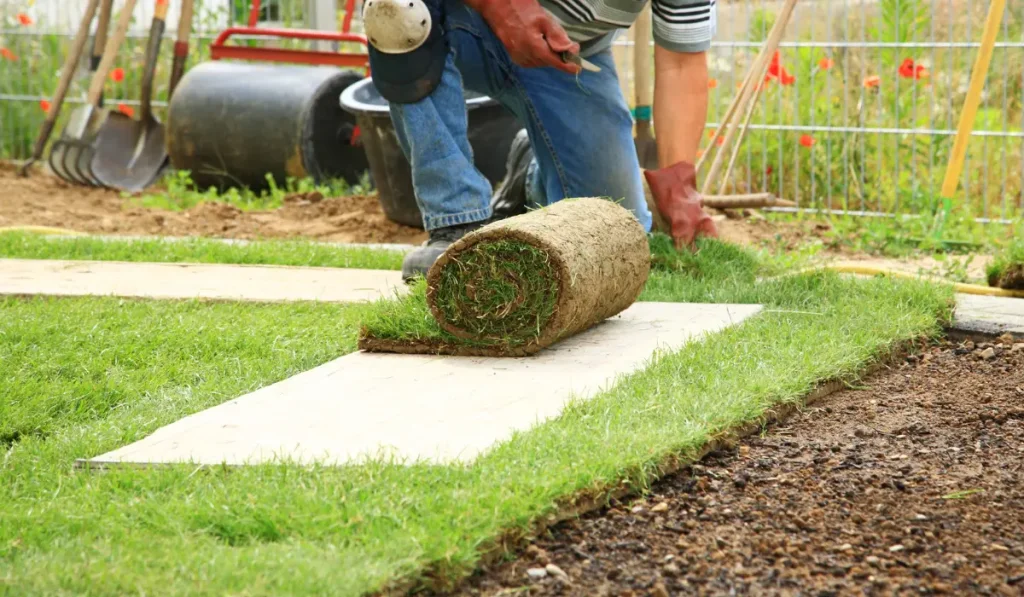Ants in your lawn can disrupt the soil, interfere with plant health, and attract other pests like aphids and grubs. Whether you’re spotting mounds in your backyard or noticing trails weaving through your garden beds, ignoring the problem usually makes it worse.
In California, where dry conditions and varied landscaping styles create ideal nesting environments, staying on top of ant activity is a vital part of smart lawn care.
Here are five ways to get rid of ants in your lawn and keep your turf healthy without throwing off your yard’s ecosystem.
Key Takeaways
- Diatomaceous earth and ant bait help kill ants by targeting worker ants, their trails, and the main nest.
- Boiling water works for visible mounds but can harm grass if overused, especially on drought-tolerant lawns.
- Regular mowing, soil aeration, and removing aphids reduce ant activity by limiting shelter, food, and nesting space.
- Persistent ant problems may need perimeter treatments, lawn inspections, irrigation fixes, or help from a lawn pest expert.

1. Use Diatomaceous Earth
Diatomaceous earth is a favorite among homeowners looking for a natural way to kill ants without harming beneficial insects. It works by slicing through the hard outer shells of worker ants and larvae, which dehydrates them over time. It helps most during dry summers, when mounds appear in compacted soil.
Apply the powder directly to ant nests and along visible ant trails. Use a spray bottle to apply a light mist of water first if the soil is too dry. This helps the powder stick.
Avoid using it right before irrigation or rainfall, since moisture reduces its effectiveness.
2. Apply a Slow-Acting Ant Bait
Granules or gel-based ant bait work well for long-term ant control. They attract these pests with a food source, usually carbohydrates or proteins, mixed with an ant killer. Worker ants carry it back to the colony, where it slowly poisons the queen and the rest of the nest.
If you live near agricultural zones or heavily landscaped neighborhoods, you’ll want to rotate bait products to keep different species of ants from building resistance.
3. Water Strategically, Then Boil
Boiling water is a DIY method used to destroy ant hills, but it should be used with caution. Pouring boiling water directly into a nest will kill ants on contact and collapse their tunnels. However, using it too often can damage nearby grass, especially if you’re using drought-tolerant varieties like TifTuf.
To minimize damage, pour water in tablespoons at a time and test a small patch first. This method won’t eliminate the entire infestation if the colony is deep underground, but it can give you temporary relief when combined with other techniques.
4. Improve Mowing Habits and Aerate Compacted Soil
Infrequent mowing and soil compaction are two of the biggest contributors to recurring ant infestations. Ant mounds tend to show up more in neglected or hard-packed lawns, where they can build undisturbed.
By mowing regularly and keeping your lawn at an appropriate height for your grass type, you reduce hiding spots for ants and food sources like grub larvae.
Aerating your lawn at least once a year, especially if you have clay-heavy soil common in parts of California, also disrupts ant tunnels and improves water penetration.
5. Eliminate Aphids and Other Food Sources
Ants don’t just move into your yard for shelter; they’re there for food. Aphids are a major attractant, as ants harvest the honeydew they produce.
If you see them clustered on your ornamentals or fruit trees, you likely have an ant problem as well. A soapy water solution made with equal parts water and dish soap sprayed directly onto affected plants can help.
Just be careful with sensitive species.
You can also introduce beneficial insects like ladybugs, which feed on aphids and disrupt the ant-aphid cycle. Less honeydew means fewer ants.
What to Do When Ants Won’t Go Away
Sometimes, you’ve tried every home remedy you find online, and ants keep coming back. This is when it’s worth taking a closer look at the conditions attracting them in the first place.
Inspect for Overlooked Food Sources
Ants will stick around as long as there’s something to eat. Fallen fruit, compost piles, pet food, and even leftover drip from irrigation emit enough scent that they can detect.
In a place like California, where outdoor dining and landscaping features are common, these food sources might be hiding in plain sight. Walk your property and clean up any organic material regularly.
This can break the cycle that sustains the ant infestation.
Identify the Species of Ants in Your Lawn
Different types of ants behave differently.
Carpenter ants may be nesting in nearby wood or dead tree stumps, while black ants tend to create surface-level ant mounds in thinner turf.
Knowing which species of ants you’re dealing with, whether it’s red ants, fire ants, or even smaller sugar ants, can guide your treatment. If you’re not sure what kind you have, take a sample to your local extension office.
Treat Around Entry Points and Perimeter Zones
When ants are bypassing your lawn treatments, it often means they’re nesting just outside the treated area. This is where a perimeter treatment with granules or a mild ant killer solution can help.
Apply it around landscaping edges, walkways, or any entry points where the lawn meets hardscape. Spray bottle applications of diluted soapy water, baking soda and vinegar mixture, or borax solutions can also be useful here.
Evaluate Your Irrigation and Lawn Health
Ants prefer dry soil because it’s easier to tunnel through. If your irrigation is inconsistent or you have patches that stay too dry, those areas may become hotspots for an ant colony.
At the same time, overwatering can bring other issues, like encouraging aphids or fungal growth, that make ant problems worse. Adjust your watering to meet your grass type’s seasonal needs.
If your lawn stays soggy or develops dry spots, fine-tune your system or use smart irrigation controllers to keep things even.
Call In a Lawn-Focused Pest Control
If DIY solutions and over-the-counter products aren’t cutting it, a lawn care-oriented exterminator can step in. They’ll take a look at your specific grass type, microclimate, and landscaping design to recommend targeted treatments that won’t harm your turf.
Many lawn pros in California offer integrated pest management (IPM) plans that solve your ant problem without wrecking your lawn.
Frequently Asked Questions
Do ants eat grass or just live in the soil?
Ants do not eat grass, but their tunneling can disrupt root zones, dry out soil around grass roots, and interfere with lawn health, especially in newly seeded or shallow-rooted areas.
Can pets be affected by ant treatments on the lawn?
Yes, some lawn treatments, including granules and baits, can harm pets if ingested. Always follow label directions and keep pets off treated areas until the product has settled or been watered in.
Is it okay to rake over ant hills to flatten them?
Flattening ant hills with a rake won’t solve the problem and can spread ants across your lawn. Without targeting the colony underneath, raking just disturbs the surface without stopping ant activity.



